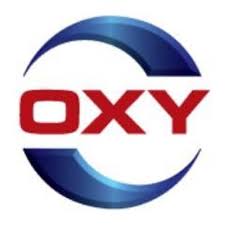西方石油公司(OXY.US)2025年第一季度业绩电话会
文章语言:
简
繁
EN
Share
Minutes
原文
会议摘要
Occidental (Oxy) has significantly improved operational efficiencies, notably reducing beam pump failures and optimizing well designs, leading to reduced CapEx and OpEx. The company expects a free cash flow inflection due to enhanced operating cash flow and lower capital spending, with a focus on non-oil and gas capital in chemicals and low-carbon initiatives. Key projects, including the Gulf of America and the Battleground chemical segment, have seen spending adjustments and CapEx reductions, contributing to incremental operating cash flow. Midstream improvements and potential asset disposals are part of Oxy's strategy to accelerate deleveraging and strengthen its financial position, aiming for long-term success and meaningful returns to shareholders. Additionally, Oxy is advancing negotiations to extend its Block Phi contract in Oman, targeting significant value and resource unlocking.
会议速览
Occidental reports strong Q1 2025 performance with efficient operations and cost management, achieving significant improvements in drilling efficiency and well costs. The company is in advanced negotiations to extend its Oman Block Phi contract by 25 years, aiming to deliver substantial value and support Oman's national objectives.
The company discusses the proposed expansion of Fox 53, emphasizing its potential to unlock significant resources and enhance cash flow. They highlight recent discoveries in North Omon and the strong performance of Hoxa Chem despite operational challenges. The midstream and marketing business also outperformed expectations, driven by gas marketing optimization and a healthy sulfur market. Additionally, the company announces a landmark carbon offtake agreement with Cf Industries, showcasing their capabilities in large-scale carbon management and aligning with their disciplined growth strategy in low carbon ventures. The first quarter results reflect the quality of assets, team talent, and innovative culture, providing a solid foundation for free cash flow generation.
The company has retired $2.8 billion in debt year-to-date, reducing annual interest expense and enhancing financial resilience. Despite market headwinds, proactive steps including Permian rig reductions and project optimizations lower capital guidance by $200 million, with estimated $150 million in Opex savings by 2025. The focus remains on disciplined execution, value preservation, and responding quickly to changing conditions while maintaining steady development programs to drive capital efficiency improvements.
In the first quarter of 2025, the company reported an adjusted profit of 87 cents per diluted share and generated approximately script billion dollars of free cash flow before working capital. Strong operational execution, including from the Permian activity levels and the completion of annual plant maintenance, contributed to the positive results. Despite facing challenges such as semiannual interest payments on debt and annual property tax payments, the company exited the quarter with Ed ed billion dollars of unrestricted cash. The outlook for the remainder of the year is positive, with expectations of modest production increases driven by various sources. The company is maintaining its total company production guidance for the year, while revising its operating cost guidance down reflecting a commitment to driving operational efficiency. Additionally, the chemical business overcame short-term operational impacts, and midstream earnings guidance was raised by Rick million dollars due to strong execution and outperformance.
The company emphasizes debt reduction as a core priority, highlighting successful initiatives like the common warrant exercise price reduction and divestiture opportunities. With minimal debt obligations and strong operational momentum, the company anticipates significant pre-tax cash flow uplifts from revised crude transportation contracts and chemical business projects, aiming for consistent results and long-term shareholder returns.
Teams focus on maintaining cost and operational efficiencies for long-term cash flow, achieving year-on-year improvements in well costs and operating expenses. Strategies include supply chain optimization, capital facility adjustments, leveraging synergies in the basin, and managing operational expenses, particularly through direct costs and downhole maintenance, showcasing sustainable improvements and failure reduction in beam pumps.
The discussion focuses on the expected free cash flow inflection over the next few years, breaking down contributions from incremental operating cash flow and reductions in capital spending. Key points include the optimization of design and potential deflation benefits in Gulf of America projects, the expected savings from the chemical segment's battleground project, and improvements in cash flow from interest reductions and midstream activities.
The company plans to accelerate debt reduction, considering all options including disposals, aiming to pay off maturing debt by 2026 while maintaining a healthy cash balance. Capital spending is expected to decrease next year following the completion of major projects, without being fully replaced by new projects.
The discussion explores the optimal timing for divesting short-cycle versus long-cycle assets in the current oil market cycle, considering the industry's long-term outlook and the value of assets based on oil price recovery expectations.
The company expresses excitement over newly identified value enhancement opportunities in Block Phi and the North Oman discovery, anticipating an uplift in cash flow compared to current levels, with resilience at lower oil prices due to the PSC nature. While specific operational financial metrics aren't provided, the extension of Block Phi and the Manan gas discovery are highlighted as significant developments.
In Oman, the Ministry of Energy's vision is advancing with substantial oil production and exploration successes in Block Phi, marked by efficient operations, reduced costs, and promising discoveries.
The discussion highlights the strategic approach towards de-risking the Stratos project within the low carbon ventures business, emphasizing the importance of R&D progress, policy environment, voluntary compliance markets, and partnerships. The team is optimistic about the potential returns and the role of enhanced oil recovery in extending energy independence, while leveraging the growing demand for carbon reduction credits.
Discussion highlights concerns over oil market dynamics, particularly the potential plateauing of US oil production sooner than expected due to decreased activity levels in key basins like the Permian, influenced by pricing volatility and economic uncertainties.
There have been no new midstream recontracting or chemical project benefits; the mentioned improvements were from existing oil transportation contracts and the battleground expansion project. The focus is on enhancing operations efficiency and optimizing CO2 usage in reservoirs to expand margins and improve Eor's competitiveness in the portfolio.
From 2015 to 2025, the company significantly expanded its shale production and resources, while also maintaining a strong focus on conventional resources in regions like the Gulf of America, Algeria, and Oman. With plans to leverage direct air capture technology for enhanced recovery, the firm anticipates substantial growth potential beyond the next decade.
The company discusses strategies to reduce capital and operational expenditures without impacting future production, emphasizing efficiency gains, infrastructure optimization, and leveraging existing facilities. They also highlight benefits from supply chain management, including deflation of goods and services costs and increased market share focus from vendors.
The company anticipates operating income of approximately 435 million for the first half of 2025, with a full-year guidance of a billion. Domestic PVC demand is expected to grow, while international conditions remain challenging due to oversupply in China. Domestic CA demand is projected to be similar to the previous year. Improvements in demand and pricing are anticipated in the latter part of Q2 and Q3, influenced by supply rationalization and drops in raw material costs. Uncertainty remains regarding demand and pricing for the remainder of the year, but potential tailwinds from lower costs are noted. The full-year income is expected to fall within the guidance range, with further clarity anticipated after the second quarter.
要点回答
Q:How are the teams at Occidental performing in a macro environment with heightened volatility and uncertainty?
A:Despite heightened volatility and uncertainty, Occidental's teams have once again delivered outstanding performance across the portfolio.
Q:What were the results of Occidental's efforts in the Gulf of Mexico and the Permian?
A:The teams at Occidental have reduced Permian unconventional well costs substantially, with particular notable performance in the Delaware Basin, and have also seen improvements in drilling duration per well versus last year. They expect to bring more wells online and increase production with a reduced rig count in the Delaware Basin program.
Q:What is the proposed extension of the Block Phi contract aiming to achieve?
A:The proposed extension of the Block Phi contract by 15 years to 2050 aims to deliver significant value to all stakeholders while supporting Oman's national objectives.
Q:What is the target for additional resources that could be unlocked in Oman?
A:The proposed expansion in Oman could unlock more than 500 million gross barrels of additional resources.
Q:How is the midstream and marketing business performing and what is the significance of the agreement with Cf Industries?
A:The midstream and marketing business significantly outperformed the high end of its guidance range for the first quarter, supported by strong gas marketing optimization and a healthy market for sulfur. The landmark 25-year carbon offtake agreement with Cf Industries is significant for large-scale carbon management solutions and does not require near-term capital expenditures.
Q:What is the company's strategy regarding the reduction of debt and return of capital?
A:Occidental's strategy focuses on strengthening its financial position through debt reduction, aiming for a more meaningful return of capital to common shareholders across the commodity cycles, and rebalancing enterprise value into common equity.
Q:What is the impact of the strategic cost actions taken by Occidental?
A:Strategic cost actions have led to $150 million in estimated 2025 Opex savings and have lowered capital guidance for the year by $200 million, enhancing financial resilience and margins with minimal impact on this year's production.
Q:What is the company's strategy for responding to potential commodity price weakening?
A:The company plans to scale back activity and manage costs prudently if commodity prices weaken meaningfully, similar to what they did in previous situations. This strategy involves maintaining high-quality, low breakeven inventory in current development programs and sustaining long-term operational efficiencies.
Q:What financial focus is the company maintaining for the next few years?
A:The company is focused on sustaining strong cash flow generation potential over the next several years and preserving value, rather than solely maximizing free cash flow in the short term.
Q:What were the financial results of the first quarter of 2025?
A:In the first quarter of 2025, the company generated an adjusted profit of 87 cents per diluted share and a reported profit of Ed cents per diluted share. They produced approximately script script billion dollars of free cash flow before working capital and exited the first quarter with Ed ed billion dollars of unrestricted cash. There was a negative working capital change, typical for the first quarter, due to semiannual interest payments on debt, annual property tax payments, and payments under compensation plans.
Q:What factors influenced the change in the company's production mix and operating expense guidance for the second quarter?
A:The modified production mix for the second quarter is expected to slightly reduce the annual total company oil cut due to the divestitures and maintenance activities in the Gulf of America. However, these factors are being offset by operational efficiencies and timing in the Permian region, which has led to a reduction in the full year operating cost guidance.
Q:What is the midstream team's position in relation to market conditions and guidance adjustments?
A:The midstream team is well positioned to capitalize on gas marketing opportunities, with strong execution and outperformance that enabled a raise in midstream full year guidance range by Rick million dollars. While market conditions are not expected to persist, the results underscore the strength and reliability of their capabilities during volatile periods. Midstream earnings in the second quarter are expected to decrease due to commodity price timing but will be offset by mark to market adjustments.
Q:How did the company manage capital spending and guidance in the first quarter?
A:The company's first quarter results were aligned with the script business plan, with a capital program weighted towards the first half of the year. By maintaining realized efficiency gains, they released a Delaware Basin rig in April and plan to release another in early Qi. This optimization and the reduction in capital guidance range by Rick million dollars are expected to deliver a positive cash impact of $350 million in 25.
Q:What is the company's approach to financial prioritization and debt reduction?
A:Debt reduction remains a core priority, evidenced by consistent repayments and diversified sources of capital contributing to progress. A program to temporarily reduce the common warrant exercise price was successful in retiring script million dollars of debt in April, enhancing the deleveraging trajectory.
Q:What divestiture and investment strategies is the company pursuing?
A:The company continues to actively evaluate divestiture opportunities that align with strategic priorities and enhance long-term value while maintaining discipline in execution. They have successfully navigated through cycles of volatility and are well positioned with minimal debt obligations over the next few months, thanks to their short cycle US onshore portfolio and capital flexibility.
Q:What are the projected benefits from the revised crude transportation contracts and the chemical business expansion?
A:The company will begin to see benefits from revised crude transportation contracts at lower rates, which will deliver a pre-tax cash flow uplift of approximately $200 million in 25 and $400 million annually starting in 26. In the chemical business, the modernization and expansion project will provide a significant uplift in earnings over the next several years, combined with the roll off of capital investments and the completion of Stratos. These factors, along with reduced interest expense and further debt paydown, are expected to deliver incremental pre-tax free cash flow from non-oil and gas sources of about script billion dollars in 2025, with even more expansion in 2027.
Q:What are the strategies being focused on to strengthen the balance sheet and increase shareholder returns?
A:The strategies being focused on to strengthen the balance sheet and increase shareholder returns include strengthening the balance sheet, increasing returns to shareholders, contributing significant resources to advancing US energy leadership, building a high-performing and resilient business, and delivering strong results across commodity cycles.
Q:What are the main components of the cost reductions discussed and how might they affect future production or capital?
A:The main components of the cost reductions discussed include efficiency gains and revaluation of project timelines. Specifically, cost reductions were mentioned in relation to the Permian, Gulf of Mexico, and enhanced oil recovery, with impacts on operational expenses. There are implications for future production and capital, although specific details are not provided in the transcript.
Q:What considerations are being made to maintain cost efficiencies and how are these reflected in the company's performance?
A:The company is focused on maintaining cost efficiencies through operational improvements and cost structure analysis. They are continuing to optimize their programs and project scenarios, which includes supply chain efficiencies and year-on-year performance improvements in well costs and operating expenses. These considerations are reflected in the company's performance with continued focus on cost structure and operational excellence.
Q:How are capital facilities being optimized in the Permian and what synergies have been identified?
A:The company is optimizing capital facilities in the Permian, focusing on multi-year projects that support development. They have also identified synergies in the mid-basin with their Oxy Rock assets, which contribute to cost savings and operational efficiencies.
Q:What measures are being taken to reduce downhole maintenance costs and how is this impacting the company's operations?
A:The company is reducing downhole maintenance costs by improving downhole production system operations, which has led to a significant reduction in the failure rate of beam pumps. This has decreased the need for rig and service deployments to repair down wells, thereby reducing downhole maintenance costs and improving operational efficiency.
Q:What is the company's approach to free cash flow and how does it relate to capital spending and operating cash flow?
A:The company is focused on sustaining free cash flow by balancing incremental operating cash flow with reductions in capital spending. This is tied to the evolution of non-oil and gas capital in the chemicals and low-carbon sectors. Specific details on the contribution of each element to free cash flow are not provided in the transcript.
Q:Can you detail the projected cash flow improvements mentioned in the speech?
A:The projected cash flow improvements include a CapEx reduction of $1 billion in 2025 from the battleground project, an incremental operating cash flow of around $200 million from midstream segment contracts expiring this year, and a decrease in interest expenses by $200 million due to debt paydown. These factors are expected to result in a total cash flow improvement of $1 billion for 2027.
Q:What are the potential disposal options being considered by the company?
A:The company is considering various options to accelerate deleveraging, which includes potential disposals. This consideration is in light of their debt maturity profile and the focus on balancing the balance sheet. The specific assets that might be considered for disposal, including midstream assets, are not explicitly mentioned in the transcript.
Q:What are the company's plans for paying off the debt maturing in 2026?
A:The company plans to achieve the debt reduction maturing in 2026, aiming to have at least part of it paid off this year, with the certainty of paying it off by the maturity date. They intend to accelerate the debt reduction process, although they want to maintain a healthy balance of cash on the balance sheet.
Q:How does the company plan to manage capital expenditures after completing major projects?
A:The company expects capital expenditures to be lower next year, although the exact level is yet to be determined. They indicate they will not replace the cost of the projects being completed with additional capital.
Q:What is the company's strategy regarding divestitures at the current point in the cycle?
A:The company has several options regarding divestitures and values are based. They believe that companies will continue to seek oil assets, given the long-term view that oil prices will recover. They intend to get the best value for the assets, whether they are oil assets or otherwise.
Q:What potential does the company see in Block Phi and the North Oman discovery?
A:The company is excited about the potential in Block Phi and the North Oman discovery. They have an established operational team, with a large inventory potential, competitive projects, and a focus on efficiency improvements, including reduced drilling costs and workover costs.
Q:How does the company plan to improve efficiency in Oman?
A:The company plans to improve efficiency in Oman through ongoing reduction in drilling costs and significant improvements in artificial lift performance, resulting in reduced workover costs. They attribute this to their strong operational team and the government of Oman's support.
Q:What are the expectations for the Stratos project and the potential impact of changing policy on phase II?
A:The company views the Stratos project as exciting and important for their low carbon ventures business. They expect a strong voluntary compliance market for carbon reduction credits to continue and believe this will help bridge the gap toward realizing enhanced oil recovery. The trajectory includes continued R&D progress, such as accelerated costs down in direct air capture, with the company seeing significant savings and process component reductions in phase II compared to phase I.
Q:What are the strategies being considered to ensure competitive returns?
A:Strategies include de-risking through R&D, operations with Stratos, market support, and partnerships across all low carbon efforts.
Q:How are technology choices and costs impacting the integrated value?
A:Technology choices and costs are integral to the integrated value, affecting both the tech development and the cost as a core part of the oxy business.
Q:What are the current expectations for US oil production, especially in the Permian basin?
A:Most shale basins are plateauing or declining, with the Permian making up for the decline. However, if activity levels continue to drop, the Permian could plateau sooner than expected, potentially leading to an overall production peak between 2027 and 2030, which might now occur sooner due to current headwinds.
Q:Are there any new midstream recontracting or chemical project benefits contributing to free cash flow?
A:There have been no new midstream recontracting or chemical project benefits contributing to free cash flow. The previously outlined script oil transportation contracts expiring in Q1 and the benefit from the Bayou Gargantua expansion project are the extent of the changes.
Q:How does the company plan to adjust the relative mix of Enhanced Oil Recovery (EOR) in the portfolio going forward?
A:The company expects to maintain efficiencies in the cost structure without changing production levels. It plans to continue working on operations efficiency, optimizing CO2 usage through reservoirs, and expanding margins to improve the competitiveness of EOR in the portfolio.
Q:What is the potential for cost savings and the size of the opportunity set for future queries?
A:The potential for future cost savings and the size of the opportunity set will depend on continued momentum and further details on script and ly cost saving initiatives.
Q:Will the company substantially increase activity levels outside the US, and what are the potential opportunities?
A:The company has significantly increased its activity levels in the US, and while it has reduced international production, it still has substantial opportunities in conventional areas, including work in the Gulf of Mexico, Algeria, Oman, and potential growth in Abu Dhabi. These opportunities could extend development potential well beyond the next decade due to additional resources and enhanced recovery technologies.
Q:What are the expected production impacts from the CapEx and Opex reductions?
A:The company decided to reduce CapEx and Opex to maintain production in the outer years (2026 and 2027), as it represents cash flow that could be used to create additional value. There is no near-term production impact, but modest production impacts may be realized over the next one to two years. The company expects to make up for these cuts with further efficiencies over time.
Q:What is the significance of the rig drop in terms of production and cost reductions?
A:The rig drop is significant as it was an acceleration of the drilling efficiency improvements which allowed the company to add more net wells online and release more rigs than anticipated, demonstrating the ability to do more with less. This action led to the reduction of rigs without any impact on production and supports the focus on high return cash flow.
Q:How is the company optimizing its facilities and infrastructure costs?
A:The company is optimizing facilities and infrastructure costs over multiple years by utilizing its scale and operations capabilities. An example of this optimization is the use of an existing central facility in the legacy Midland development, which saved several million dollars instead of building a new one.
Q:What is the company's approach to managing the supply chain and costs?
A:The company's approach to managing the supply chain involves working with large, best-in-class companies that understand market vectors to achieve deflation in goods and services on both the CapEx and Opex sides. The company is also receiving cost reduction offers from vendors and focusing on market share rather than just margins to the benefit of the company's financial performance.
Q:What is the expected impact of market dynamics on the company's chemicals business?
A:Market dynamics are expected to affect the company's chemicals business with varying impacts on PVC demand and prices. The domestic PVC demand is expected to grow slightly, while international demand is anticipated to grow around 1.5 to 2%. The oversupply in China is causing challenges in the export market. On the pricing side, the recent capacity rationalization is expected to rebalance the market and improve pricing. The company is also dealing with the impacts of short-term events such as weather-related outages and increased raw material costs, which are expected to improve in the second half as producers continue to rationalize supply and costs drop.






